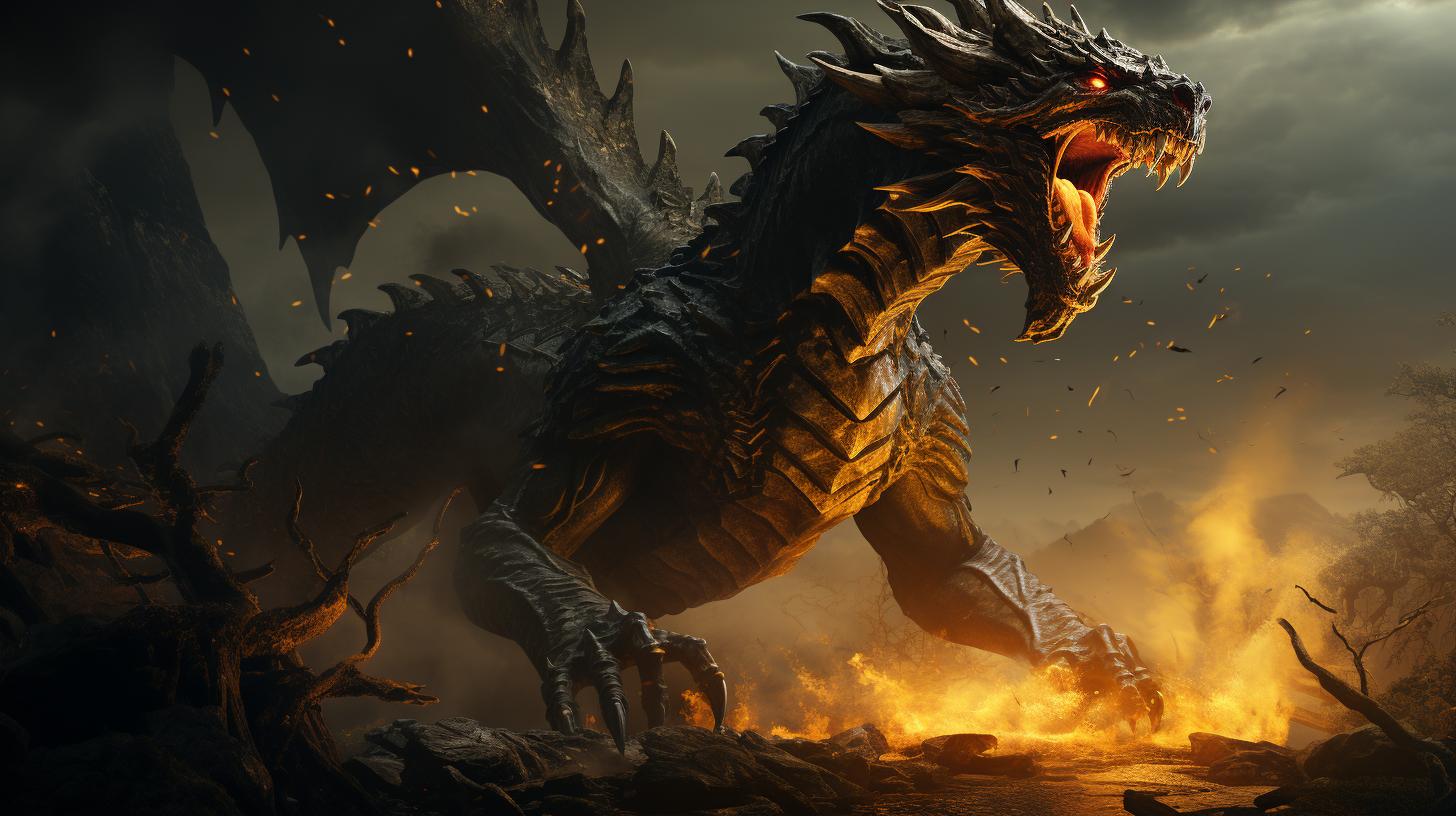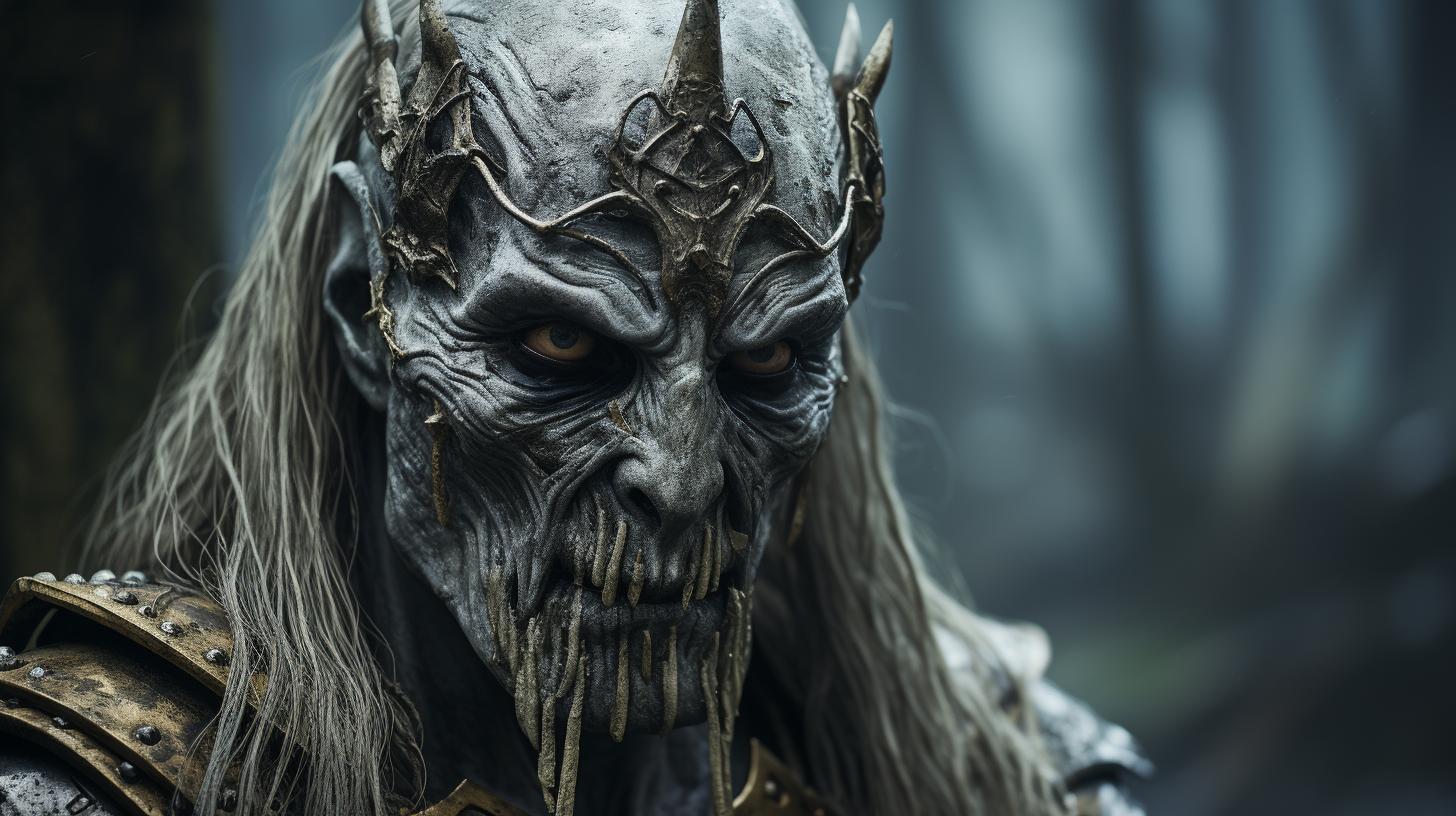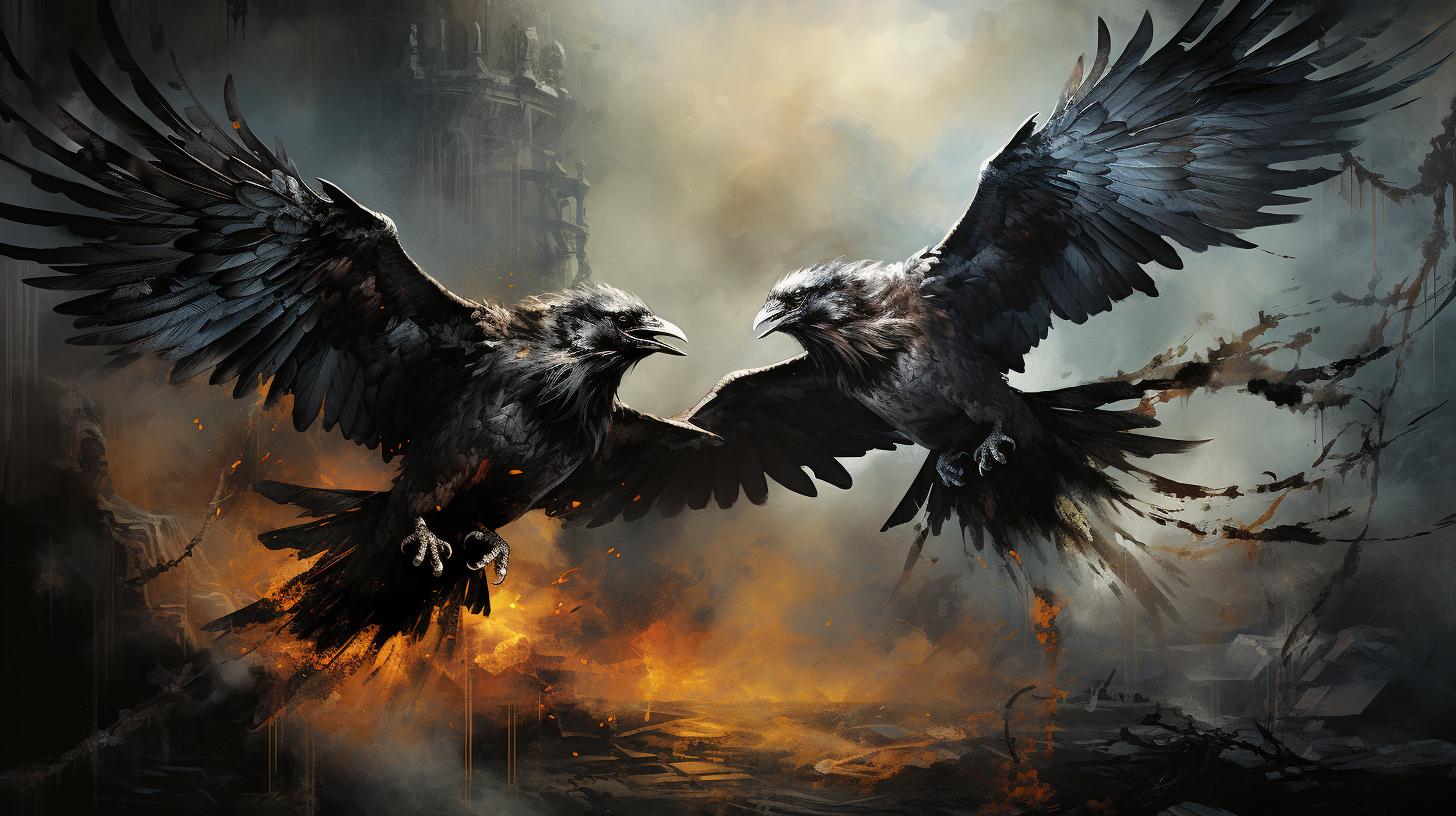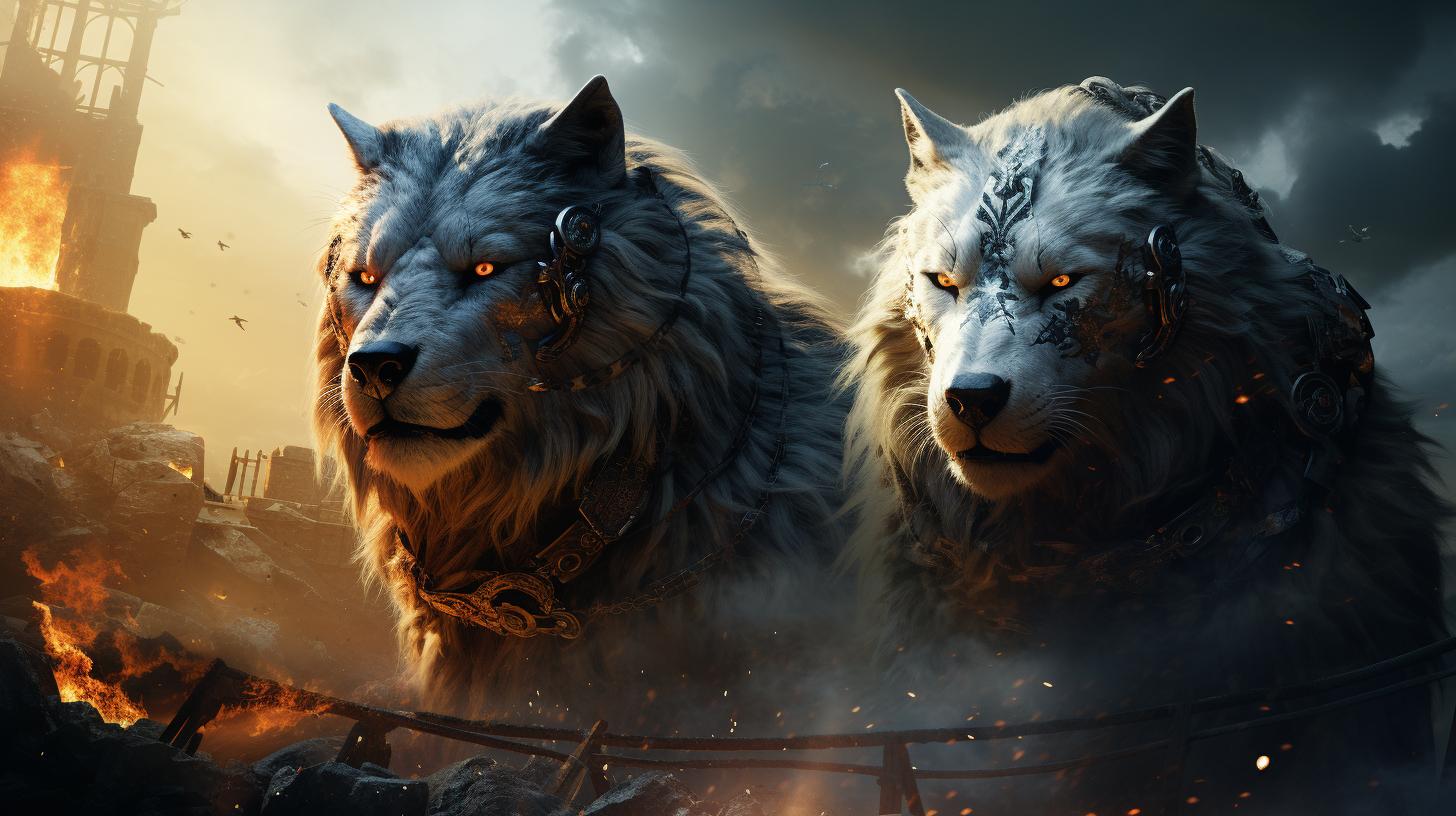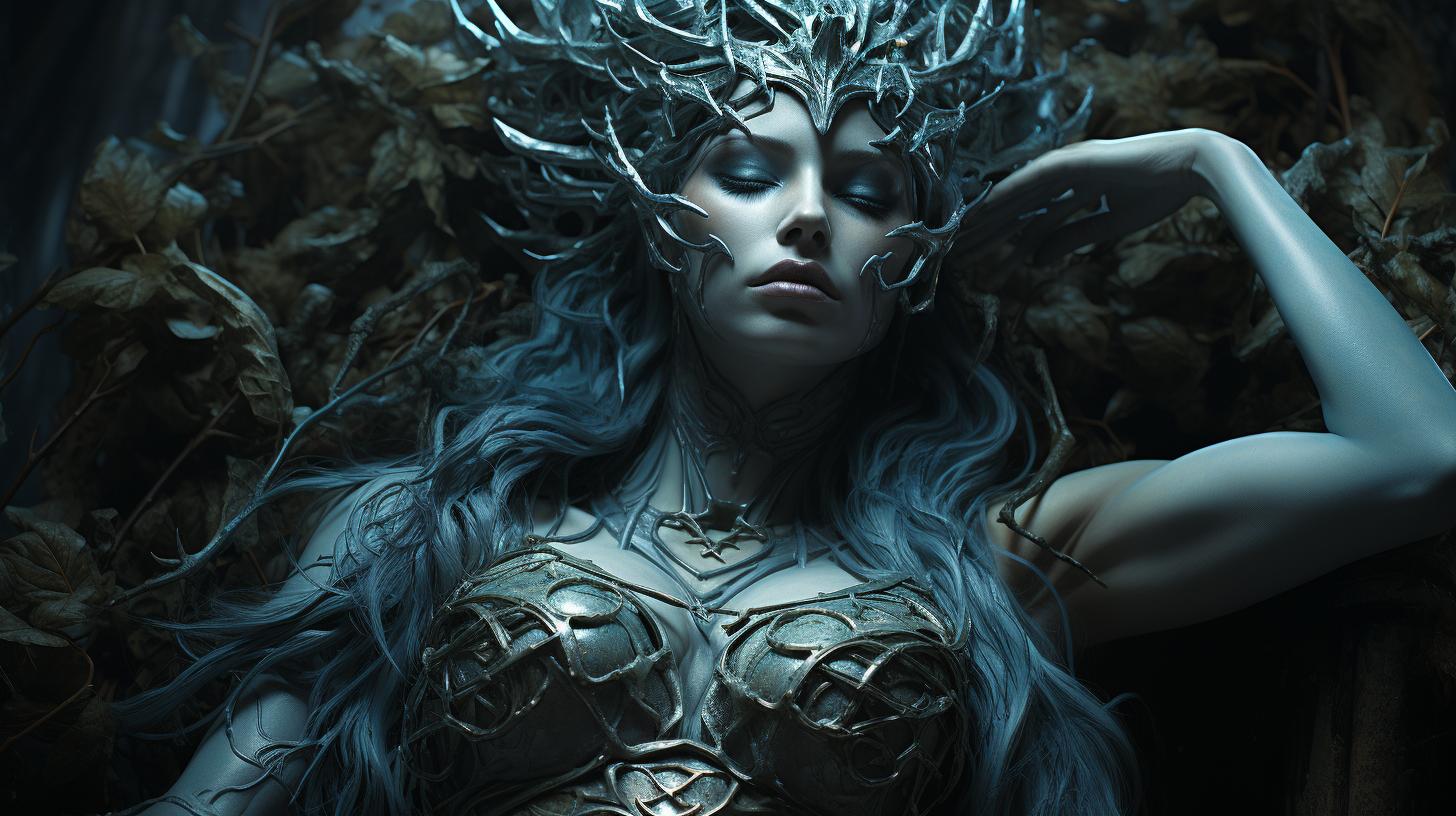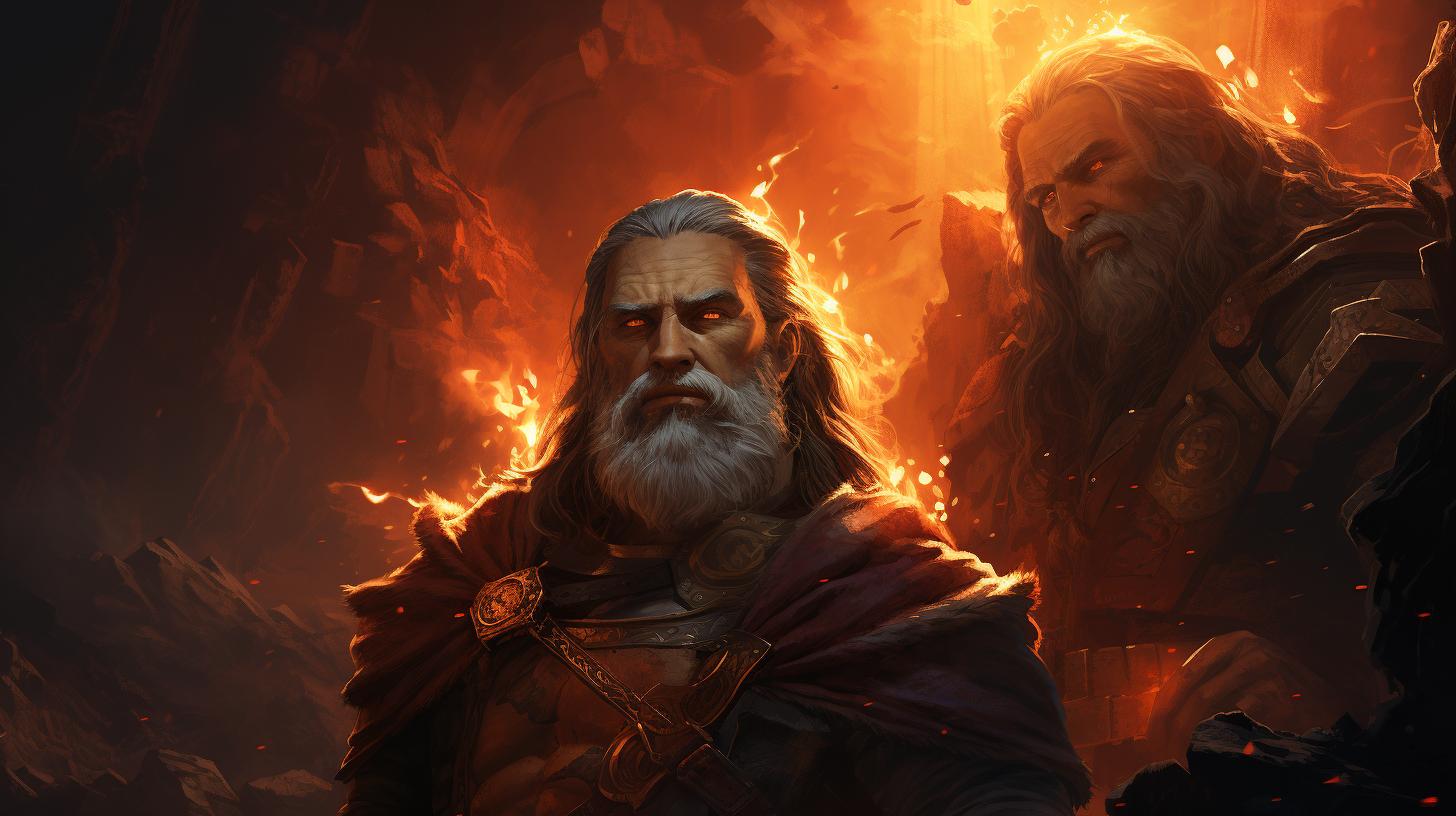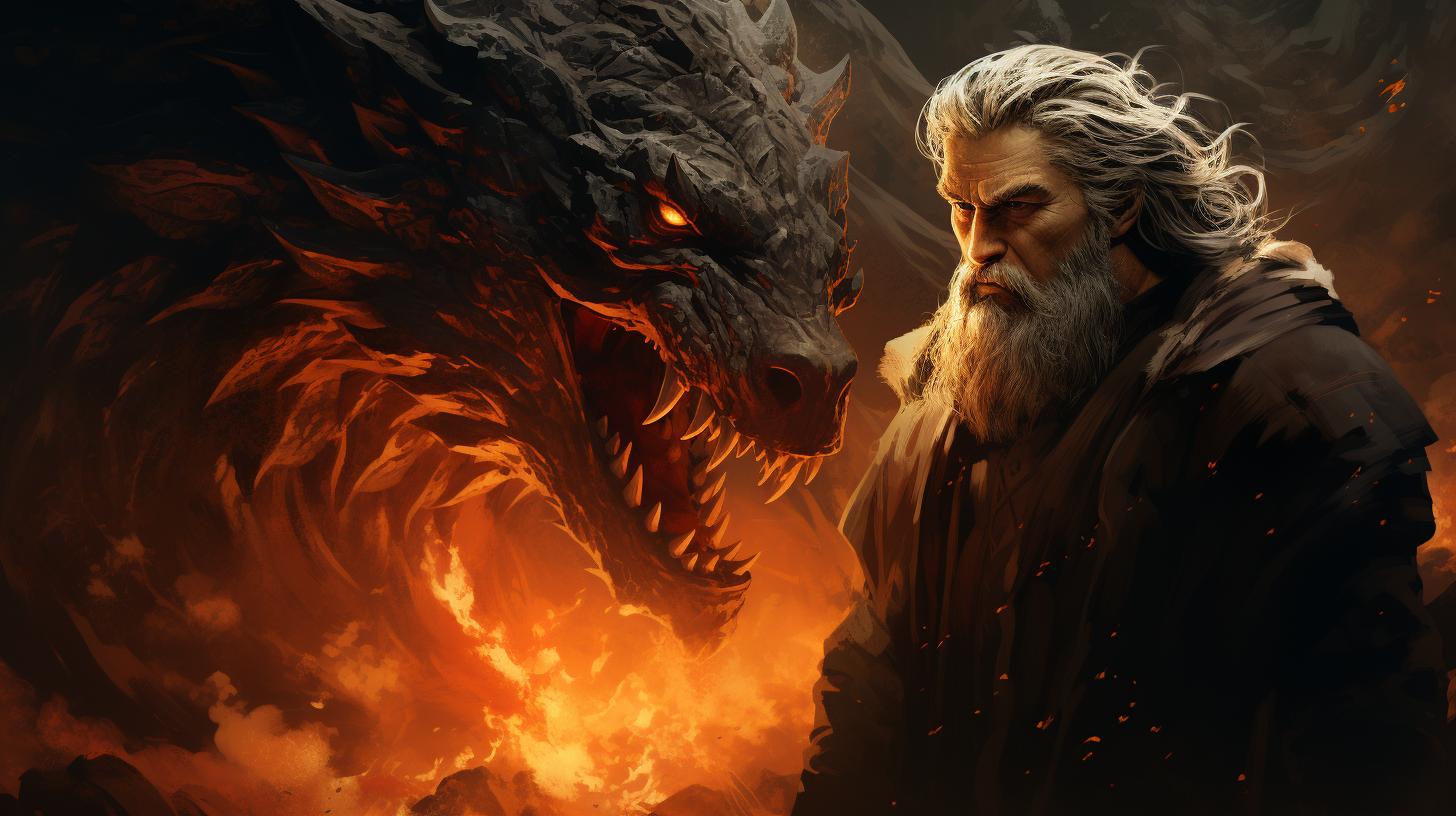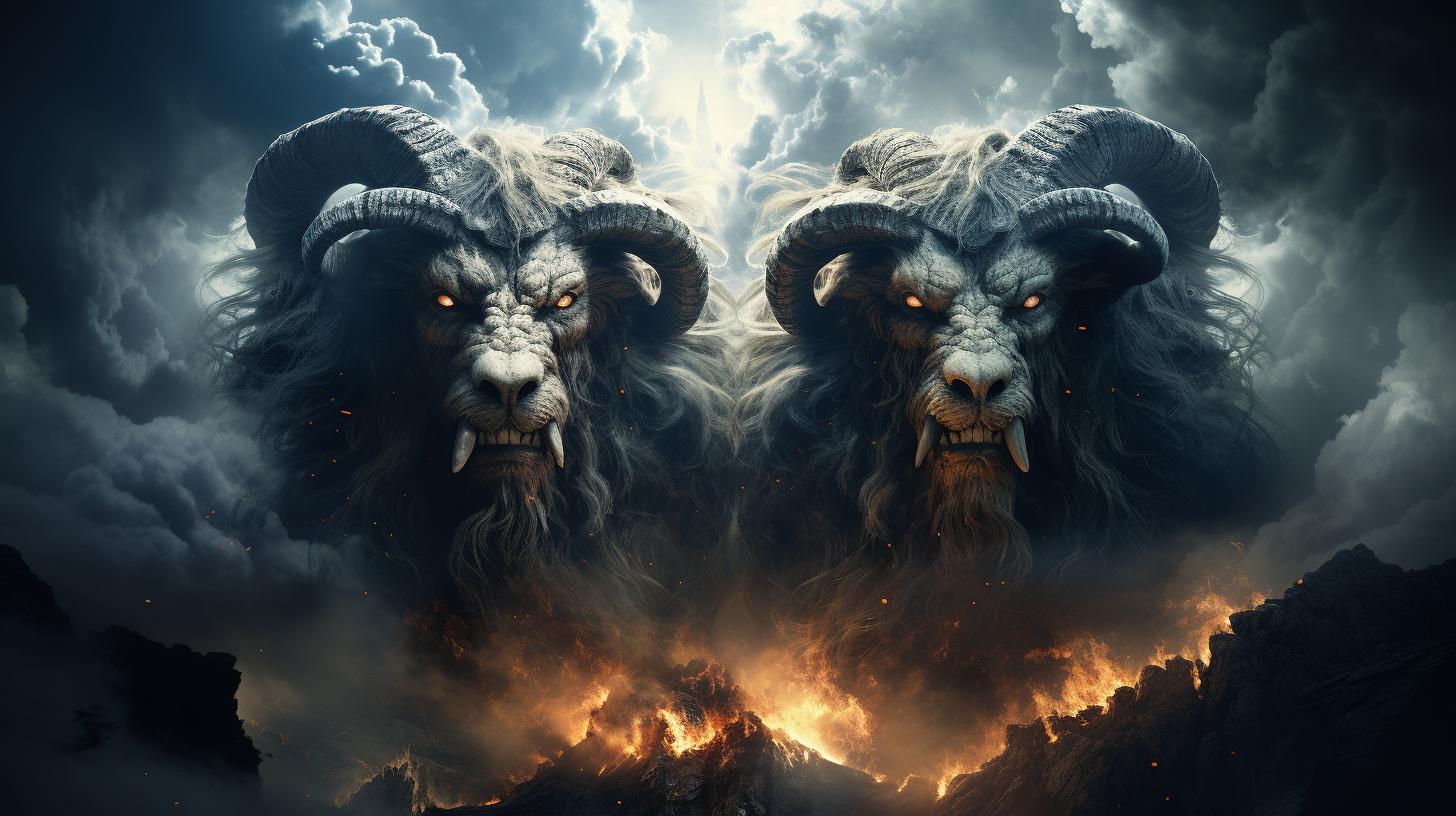Unveiling the Myth of Nidhogg in Norse Mythology: Exploring its Destructive Power
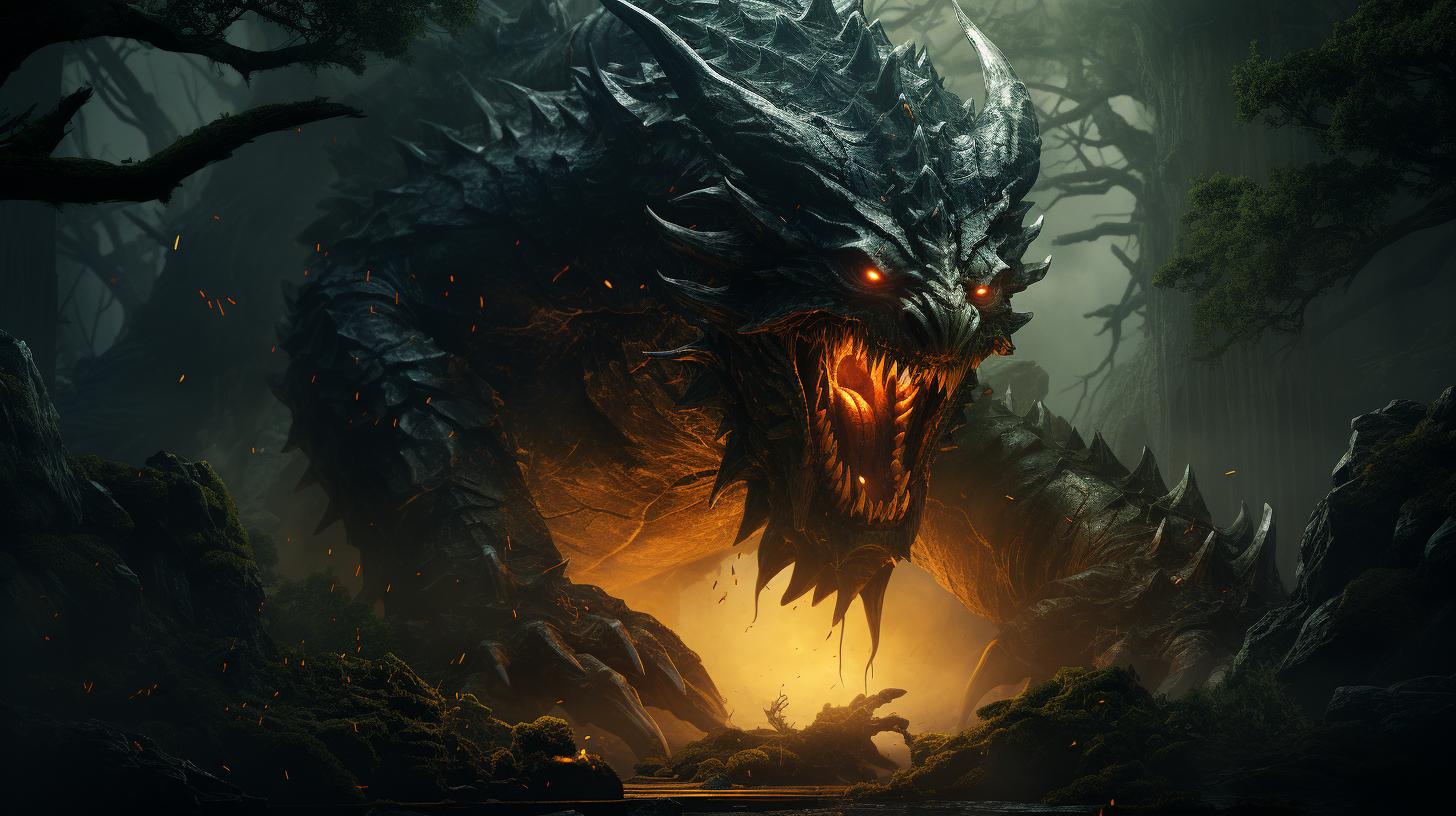
Nidhogg, the serpent of Norse mythology, holds a significant role in the Norse cosmology. Dwelling beneath the world-tree Yggdrasil, Nidhogg’s destructive actions aim to bring chaos to the Nine Worlds.
During Ragnarok, Nidhogg emerges to potentially aid the giants’ cause, aligning itself with forces of destruction. Additionally, Nidhogg presides over the underworld realm known as Náströnd, where sinful souls face punishment.
Exploring Nidhogg’s involvement in Ragnarok, its clash with Jormungand, and its representation in modern interpretations, this article delves into the captivating world of Nidhogg Norse mythology.
Nidhogg: The Serpent of Destruction
Nidhogg is a formidable serpent in Norse mythology, known for its role as a destructive force in the cosmos.
This section explores Nidhogg’s significant presence and impact in Norse cosmology, shedding light on its motivations, actions, and its profound connection with the world-tree Yggdrasil.
Nidhogg’s Role in Norse Cosmology
As a prominent figure in Norse cosmology, Nidhogg plays a crucial role in threatening the stability of the Nine Worlds. The serpent’s actions aim to bring chaos and destruction, representing the forces of disorder and conflict within the mythological framework.
Its malevolent presence introduces an element of tension and impending doom in the Norse mythological narrative.
Nidhogg and Yggdrasil: The World-Tree Connection
One of the most notable aspects of Nidhogg’s mythology is its intimate connection with Yggdrasil, the world-tree that binds the cosmos together. Nidhogg resides beneath Yggdrasil, gnawing at its roots and causing harm to both the tree and the Nine Worlds it supports.
This symbiotic relationship between Nidhogg and Yggdrasil portrays the destructive nature of the serpent and its ability to undermine the cosmic order.
Nidhogg’s Actions and Motivations
Nidhogg’s motivations lie in its insatiable hunger and desire for chaos. By feeding on the roots of Yggdrasil, the serpent aims to weaken the tree and the Nine Worlds, sowing discord and ultimately preparing the stage for Ragnarok, the apocalyptic battle that signifies the end of the current world order.
Nidhogg’s actions align with the forces of destruction and chaos, signaling a looming threat to the stability of the cosmos.
Nidhogg and Ragnarok
Nidhogg’s involvement in Ragnarok holds significant meaning within Norse mythology. As a destructive force aligned with chaos, Nidhogg plays a crucial role in the cataclysmic events of this apocalyptic battle.
The Significance of Nidhogg’s Involvement in Ragnarok
Nidhogg’s participation in Ragnarok symbolizes the culmination of its malevolent intentions.
Its emergence from beneath Yggdrasil signifies the impending destruction of the world-tree and the imminent chaos that will engulf the Nine Worlds.
Nidhogg’s Association with the Giants
In the grand battle of Ragnarok, Nidhogg reveals its alliance with the giants, aligning itself with their destructive objectives. This association intensifies the magnitude of Nidhogg’s threat, as it seeks to aid the giants in their pursuit of domination and upheaval.
Nidhogg’s Destructive Influence during Ragnarok
During Ragnarok, Nidhogg unleashes its full destructive potential, wreaking havoc upon the cosmos. Its relentless assault on Yggdrasil’s roots further weakens the stability of the Nine Worlds, paving the way for the impending destruction and chaos prophesied in Norse mythology.
Nidhogg vs Jormungand: Clash of the Serpents
Jormungand, known as the World Serpent, is another formidable creature in Norse mythology. As the offspring of Loki and Angrboða, Jormungand grew to immense size, encircling the earth and holding its own tail.
This serpent represents chaos and destruction, much like Nidhogg.
Jormungand: The World Serpent in Norse Mythology
Jormungand’s presence in Norse mythology is rooted in its role as a symbol of chaos and impending doom. According to the Prose Edda, it was foretold that Jormungand would eventually meet its destined foe, Thor, during Ragnarok.
This cataclysmic battle between the gods and giants marks the end of the world and the beginning of a new cycle of creation.
Comparing Nidhogg and Jormungand: Similarities and Differences
While both Nidhogg and Jormungand are depicted as serpents in Norse mythology, they differ in their specific roles and representations. Nidhogg primarily dwells beneath Yggdrasil, consuming its roots and perpetuating chaos.
On the other hand, Jormungand’s presence extends across the earth, representing the destructive forces that threaten the gods and humanity.
Furthermore, Nidhogg is associated with the underworld realm of Náströnd, where it presides over the punishment of sinful souls.
Jormungand, however, is not directly linked to any particular realm or afterlife punishment.
Their Roles in the Norse Mythological Narrative
Nidhogg and Jormungand play pivotal roles in the intricate tapestry of Norse mythology. Nidhogg’s actions serve to undermine the stability of the cosmos, aligning itself with the forces of destruction during Ragnarok.
Jormungand, on the other hand, stands as a formidable adversary against Thor, embodying the chaos that ensues during the end of the world.
These serpents symbolize the eternal struggle between order and chaos, highlighting the fragile balance within the Norse mythological narrative.
Nidhogg and the Underworld: Náströnd
Nidhogg, the serpent of destruction in Norse mythology, not only threatens the stability of the cosmos but also has a significant role in the punishment of souls in the underworld realm known as Náströnd.
This section delves into Nidhogg’s involvement in the afterlife, the nature of Náströnd, and the influence of Christianity on its connection to the underworld.
Nidhogg’s Role in the Punishment of Souls
Nidhogg takes on a dark responsibility in its association with Náströnd.
This dreadful place is known as the “Shore of Corpses” and serves as a realm where individuals who have committed perjury, murder, and adultery face their punishment. Nidhogg, being a symbol of chaos and destruction, plays a direct role in meting out these punishments, perpetuating the suffering of souls who have strayed from moral paths.
Náströnd: The Shore of Corpses
Náströnd is a grim and foreboding realm in Norse mythology. It is a desolate shore filled with venomous serpents and other cruel creatures. The souls condemned to Náströnd endure horrific torments, subjected to eternal suffering and the vilest of punishments.
The cold and inhospitable landscape of Náströnd further accentuates the severity of their torment.
The Influence of Christianity on Nidhogg’s Underworld Connection
It is worth noting that the concept of moral retribution in the afterlife, as seen in Náströnd, differs from the traditional Germanic worldview and is likely influenced by the advent of Christianity.
The introduction of Christian beliefs in Norse mythology could have led to the depiction of Nidhogg’s role in the punishment of sinful souls, aligning the mythological narrative more closely with Christian concepts of divine justice and consequences for wrongdoing.
Overall, Nidhogg’s association with the underworld realm of Náströnd underscores its malevolent nature and its active participation in the perpetuation of punishment and suffering. The influence of Christianity on this aspect of Norse mythology provides an insight into the evolution of Norse beliefs and their incorporation of external influences, leading to a complex and multi-layered mythological tapestry.
Exploring Nidhogg in Modern Interpretations
Nidhogg, the legendary serpent of Norse mythology, continues to captivate modern audiences through various forms of art and literature. Its intriguing nature and association with chaos have inspired countless interpretations, showcasing its enduring presence in contemporary culture.
Nidhogg in Modern Art and Literature
Artists and writers have been inspired by Nidhogg’s destructive power and enigmatic presence, often depicting it in visually stunning artworks and incorporating it into captivating narratives. From intricate illustrations to vivid paintings, Nidhogg is brought to life in striking detail, allowing viewers and readers to immerse themselves in its mythical realm.
Nidhogg’s Representation in Popular Culture
Nidhogg has made its mark in popular culture, appearing in various forms of media such as movies, video games, and even music. Whether as a formidable antagonist or a symbol of chaos, Nidhogg’s portrayal in popular culture reinforces its status as a legendary creature worth exploring and understanding.
Contemporary Views and Interpretations of Nidhogg
Modern scholars and enthusiasts continue to delve into the depths of Nidhogg’s significance in Norse mythology. Through extensive research and analysis, they offer fresh perspectives and interpretations, shedding new light on Nidhogg’s role as a symbol of destruction and its deeper connections to ancient beliefs and cosmology.
- Deeper understanding of Nidhogg’s symbolism
- Interpretation through psychological or comparative mythological lenses
- Exploration of Nidhogg’s impact on Norse cultural identity
With each exploration, Nidhogg’s presence becomes more palpable, resonating with individuals who seek to uncover the layers of meaning hidden within this mesmerizing mythological creature.
Nidhogg Norse Mythology Merchandise
Delve into the captivating world of Norse mythology with a wide selection of Nidhogg-inspired merchandise. Embrace the essence of this fearsome serpent and showcase your fascination for Viking culture with an array of unique and stunning items.
Jewelry Inspired by Nidhogg and Norse Mythology
Elevate your style with exquisite jewelry that pays homage to Nidhogg and the rich imagery of Norse mythology. Discover intricately designed rings, bracelets, pendants, and necklaces featuring Nidhogg motifs and symbols from the Nine Worlds.
Each piece captures the essence of this legendary serpent, empowering you to embrace its powerful and enigmatic presence.
Clothing and Accessories Celebrating Nidhogg and Viking Culture
Show your love for Nidhogg and Viking heritage with a range of clothing and accessories. Choose from a variety of t-shirts, hoodies, leggings, and shorts adorned with Nidhogg illustrations and Norse-inspired designs.
Immerse yourself in the rich tapestry of Norse mythology and let your attire reflect your passion for this captivating world.
Other Nidhogg-themed Products and Collectibles
- Discover a diverse collection of Nidhogg-themed products and collectibles that cater to every enthusiast’s taste. From drinking horns and coffee mugs adorned with Nidhogg motifs to unique accessories like belts and beard beads, there is something for everyone.
- Explore exclusive merchandise collections inspired by Nidhogg, such as the Mammen Jewelry Collection and the Urnes Jewelry Collection.
These curated sets offer stunning pieces that capture the essence of Norse mythology and history, making them perfect for collectors and devoted fans alike.
- Take advantage of the special sale section, where you can find discounted Nidhogg merchandise.
Uncover hidden treasures and adorn yourself or your living space with remarkable pieces at a fraction of the original price.
Immerse yourself in the realm of Nidhogg Norse mythology merchandise and embrace the power and allure of this legendary serpent.
From stunning jewelry to stylish clothing and unique collectibles, there is something for everyone to celebrate and honor this captivating creature.
Nidhogg in Language and Literature
Nidhogg, the mythological serpent of Norse folklore, has left its mark on various forms of language and literature throughout history. This section explores its presence in Old Norse poems and Eddas, Snorri Sturluson’s Prose Edda, and its references in modern Icelandic and English texts.
Nidhogg in Old Norse Poems and Eddas
In ancient Old Norse poems and Eddas, Nidhogg is frequently mentioned as a symbol of destruction and chaos. Poems like Völuspá and Hávamál describe its role as a devourer of the roots of Yggdrasil, representing its relentless pursuit of dismantling the order of the Nine Worlds.
Nidhogg’s presence in these ancient texts emphasizes its significance as a disruptive force within Norse mythology and serves as a cautionary symbol for the consequences of disharmony.
Snorri Sturluson’s Prose Edda and Nidhogg
Snorri Sturluson, an Icelandic historian and poet from the 13th century, provides further insight into Nidhogg’s portrayal in his work, the Prose Edda.
Sturluson elaborates on Nidhogg’s residence beneath Yggdrasil’s roots and its continuous gnawing as a representation of decay and destruction.
Through the Prose Edda, Nidhogg’s destructive nature is expounded upon, linking it to the impending chaos of Ragnarok and the eventual collapse of the cosmos.
Nidhogg References in Modern Icelandic and English Texts
Nidhogg’s presence extends beyond the ancient texts into modern Icelandic and English literature. Authors and poets have drawn inspiration from Norse mythology, incorporating Nidhogg’s character to symbolize malevolence, discord, and the eternal struggle between chaos and order.
References to Nidhogg can be found in numerous fantasy novels, poems, and even in contemporary works exploring the themes of mythology and folklore. Its role as a formidable adversary and embodiment of destruction fuels the imagination of writers, capturing the fascination of readers worldwide.
.

